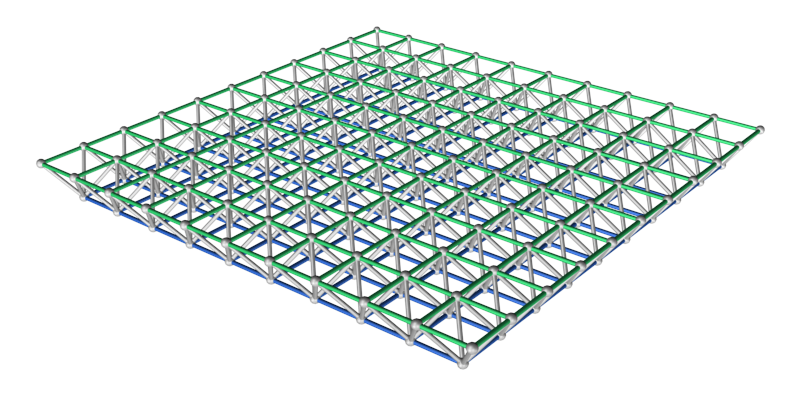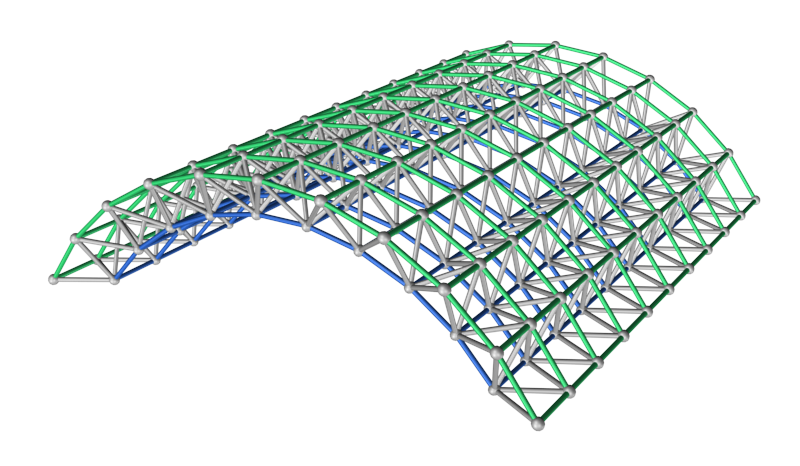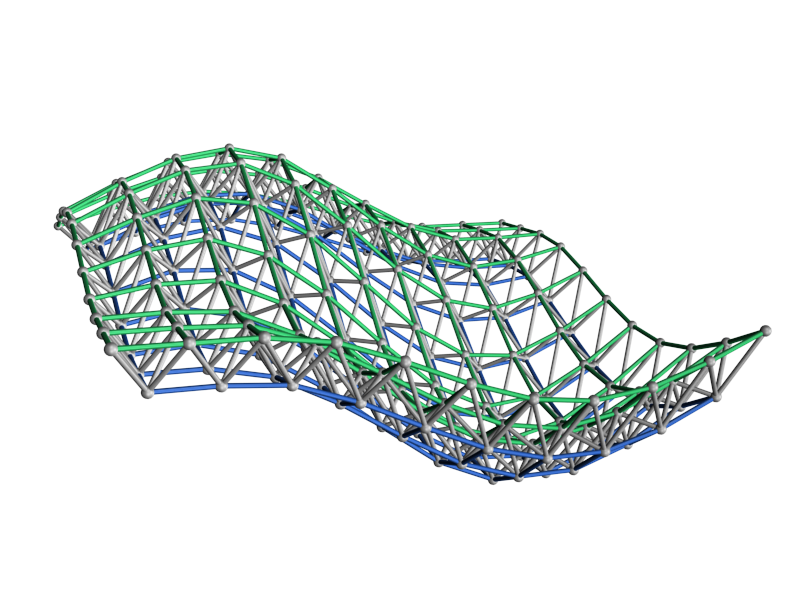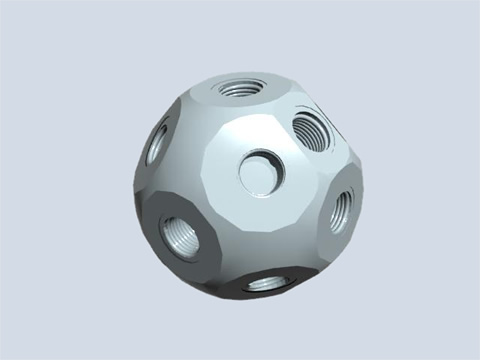Spatial (space) Structures
The behavior of structure under loads can be approximated as two-dimensional (planar structures) or three-dimensional (space a spatial structures). One has to note that, in general, all structures behave in three dimensions when subject to loads. However, for a large number of structures one can assume that most deformations and distribution of forces occur within a plane (planar structures). Many typical framed structures belong to this category. For spatial structures such approximation cannot be made as these structures behave in three dimensions. Many structures such as grids, domes, barrel vaults, towers, cable nets, belong to this category. However, in these notes, the term spatial or space structure refers to a structure made of an assemblage of linear members interconnected to each other in space, resisting loads applied at their connections or along their lengths. Members of spatial structure can be made of steel, aluminum, wood, and in rare cases, concrete.
Flat double or multi-layer grids, braced barrel vaults, braced domes, hyperbolic-paraboloids, and free-form configurations are all forms of spatial structures. Some spatial structures have positive Gaussian curvature (synclastic) such as domes, and some have negative Gaussian curvature (anticlastic) such as hyperbolic-paraboloids. Flat grids have zero Gaussian curvature.
 |
Flat Double-Layer Grids (FDLG) - Square-on-Square Offset Configuration |
 |
Double-Layer Braced Barrel Vaults (DLBBV) |
 |
Double-Layer Braced Domes |
 |
Hyperbolic-Paraboloids Double-Layer Grids |
 |
Freeform Double-Layer Grids |
Unlike most of the conventional building design processes for which the overall design of the structure is often decided by the architect and the structural engineer’s responsibility is to size members, the design of spatial structures is a collaborative effort between architect and engineer, which typically begins at early stages of the conceptual design. The geometry types, module sizes, support conditions, materials, and design approach are not determined at the early stages of the design of spatial structures.
Because the members of spatial structures are interconnected, they can distribute loads effectively. This means that a concentrated load applied at a point on the structure can be resisted by members a large distance from it.
Due to the low self-weight of these structures, the total costs of foundations and columns are relatively small. Spatial structures can be assembled in a shop and transported to the site for erection.
A Typical Spatial Structure Connector (Node)
The manufacturing of the connectors (or nodes) is one of the most important factors in cost-effectiveness of spatial structures. An ideal connector can be easily mass produced, used to join members at various angles, and resist the forces acting on it.
High quality computer graphics software and hardware and the use of Building Information Modeling have also made it possible to design and fabricate nodes with very strict tolerances that can accommodate many members to be connected to them.
|





